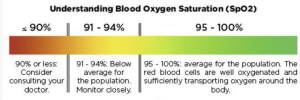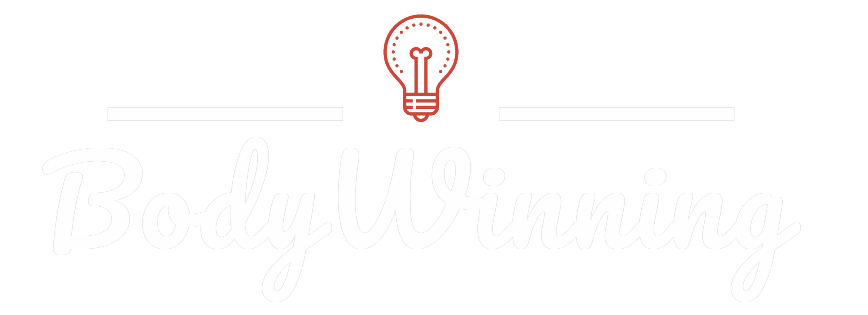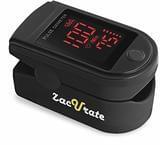Top 3 Pulse Oximeters: 2020 Reviews
- Updated: Oct 27th, 2020
We Tested the Best Finger Pulse Oximeter in the UK
Pulse oximeters are an unlikely home health essential. The device checks vital statistics like blood oxygen levels, heart rate, and blood pressure, and while these numbers may not mean much to the general public, they help medical professionals gain a better understanding of your overall health, especially during this pandemic. In fact, doctors started recommending patients purchase pulse oximeters to track coronavirus symptoms earlier this winter.
The connection made pulse oximeters just as hard to buy as toilet paper, disinfectants, and thermometers—but now, the at-home version of the medical device is back in stock. (Note: Many of these devices are not FDA-approved and recommended for sport or aviation use only. While shoppers report accurate statistics similar to readers at their doctor’s office, these at-home finds should not be expected to offer the same level of accuracy.)
A pulse oximeter works by transmitting a wavelength of light through your finger, earlobe, or toe. According to the World Health Organization, this light finds hemoglobin—the protein in your blood that carries oxygen—and the amount absorbed by the protein varies based on how much oxygen is already saturating it. A sensor on the other side of your extremity then calculates your blood oxygen levels based on the light wavelengths received, along with your blood pressure and pulse rate.
To get the best at-home reading, it’s important to complete the reading on a finger without any nail polish that’s ideally warm, according to a previous Health interview with Sharon Chekijian, MD MPH, an emergency medicine doctor with Yale Medicine. She also suggested trying to use the middle finger and paying close attention to the reading to ensure the device is continuously tracking your vitals—sudden dips and jumps could indicate you’re not using the pulse oximeter correctly.
Already an essential for those with asthma or other lung diseases, a pulse oximeter is an affordable investment that could give you peace of mind during the pandemic. It’s not only easy to use, but it gives valuable insight into your health that could be helpful to medical professionals. Below, we’ve highlighted the top-rated pulse oximeters on the market that are available to shop right now.
Disclaimer: we purchase every product we review with our own funds — we never accept anything from product manufacturers.
- Our #1 Most Popular Choice
- CEA Approved. FDA-cleared. Recommended by Nurses.
- Quick, accurate readings on multi-directional screen. Compact, durable design. Holds up to daily use. Low price and good customer ratings make it a tempting deal for casual users.
- Fast O2 saturation readings.
- This well-built model features quick pulse and oxygen level readings competitors can't beat.
- WIDE APPLICATION- For sports enthusiasts like mountain climbers, skiers, bikers or any people interested in measuring their SpO2 and pulse rate. The oximeter is intended use for check of blood oxygen saturation level for sports or aviation use. You should remain stationary while the pulse oximeter measure your pulse rate and SpO2.
- Fast Free Shipping. Money back guarantee.
- Best price for value ($45)
- Designed & Manufactured in USA.
- FDA Approved. Editor's Pick.
- Light and compact, accommodates a wide range of finger sizes
- Bright OLED with six display modes
- Long battery life and automatic power off after 16 seconds.
- Small and rugged, take-anywhere
- Used for all ages
- Displays both pulse and oxygen levels
- Free Shipping. Fast Delivery.
- Risk Free. Money Back Guarantee.
- Our pick if you are looking for a pulse oximeter for exercise purposes that's inexpensive and produces readings quickly.
- Results are visible in as little as 10 seconds for oxygen saturation, pulse rate, and pulse strength. Large, vivid display that faces users is easy to read. A handy, affordable device for athletes.
8.5

"Great"
648 Reviews
BEST PULSE OXIMETER of 2020
JN® FINGERTIP PULSE OXIMETER – Oxygen Monitor
- ➡️ Fast And Easy Usage
- ➡️ Backed By Clinical Studies
- ➡️ Super Accurate Readings
- ➡️ Easily measure the oxygen levels in your blood, without needles
- ➡️ Use ANSELF® Pulse Oximeter as an early warning signal for pneumonia and respiratory disease
- ➡️ Take multiple readings per day and give yourself peace of mind
What is a pulse oximeter and how is it being used during the СОVID-19 pаndemiс?
According to the American Lung Association, a pulse oximeter is an electronic device that measures the saturation of oxygen carried in your red blood cells. It can be used by doctors for patients with symptoms of shortness of breath or a known lung or heart condition.
Bravo TV host Andy Cohen, who tested positive for the coronavirus, said the small device helped in his recovery.
According to a report by Yahoo!, Cohen said using a pulse oximeter to monitor his oxygen at home helped keep him from needing to head to the hospital.
“You could scare yourself and think, ‘Oh my God, my lungs don’t feel right,’ but you could use this pulse oximeter and see, ‘OK, well actually, you’re fine, you’re within the range,’” he said.
“So that’s my pro-tip,” Cohen said, according to the Yahoo! article. “Make sure you have Tylenol and a pulse oximeter.”
According to a report by HealthLeaders, officials at Providence Regional Medical Center Everett in Washington State, which admitted the first U.S. COVID-19 patient, are sending patients who are likely positive for COVID-19 but not admitted to the hospital home with a thermometer and pulse oximeter to monitor their symptoms.
When you wear a pulse oximeter, you may see light emitting from the inside of it. This is normal, as one side of the unit generates light of differing wavelengths
What is pulse oximetry?
 When a doctor seeks pulse oximetry information, he or she wants to measure the level of oxygen saturation in the blood. This data helps professionals determine how well the body’s organs are working.
When a doctor seeks pulse oximetry information, he or she wants to measure the level of oxygen saturation in the blood. This data helps professionals determine how well the body’s organs are working.
A pulse oximeter is a small device that clips over a fingertip. Some people confuse pulse oximetry with the blood-drawing process, but these are two separate tests. A pulse oximeter doesn’t pierce the skin.
How a pulse oximeter works
The unit generates light
When you wear a pulse oximeter, you may see light emitting from the inside of it. This is normal, as one side of the unit generates light of differing wavelengths.
Often, a unit will generate a minimum of two light wavelengths: red visible light and infrared light. Some units generate other light wavelengths, too.
The light detector receives light
On the other side of unit’s interior is a light detector. It receives and measures the intensity of the light the generator creates.
Light passes through the finger
If your finger were not in the pulse oximeter, the light would easily travel from the generator to the detector. But with your finger in the device, much of the light is blocked and absorbed before it reaches the detector. The detector measures the amount of light that passes through your finger to reach the detector.
The unit interprets light absorption
By measuring the light, the pulse oximeter determines the oxygenation of your blood. Hemoglobin absorbs light waves when it carries oxygen. Additionally, the pulse oximeter uses the light data to measure blood vessel size and non-oxygenated hemoglobin. Within seconds, the pulse oximeter uses this data to determine your oxygenation level.
Tips
- ✅ If you’re wearing dark nail polish, your pulse oximeter may provide a false reading.
- ✅ An oxygen saturation level of about 95% is considered normal. Saturation levels below 92% are considered below average.
- ✅ Pulse oximeters are designed to be portable, so testing can be done wherever you are. Some units are more portable than others, though.
- ✅ Don’t use a pulse oximeter if your fingers are cold after being outside. Warm up your fingers first for a proper reading.
- ✅ If your oxygenation levels are poor according to your pulse oximeter, don’t panic. Pay attention to any other symptoms you may be having, and if needed, seek medical attention immediately.
- ✅ Some pulse oximeters will read your pulse at the same time they read your blood oxygenation level. Track this data for your doctor, too.
- ✅ Avoid smoking on days you’re taking pulse oximeter readings. The chemicals in cigarettes can cause false readings with some pulse oximeters.
Why Trust us?
Even if you don’t know anything about pulse oximeters, you can still make a smart buying decision with the right information in hand. At BodyWinning, we perform extensive research in every product category. To avoid bias, we always decline offers from manufacturers for “free” samples. We want to be your go-to source for honest, thorough product reviews you can trust.




